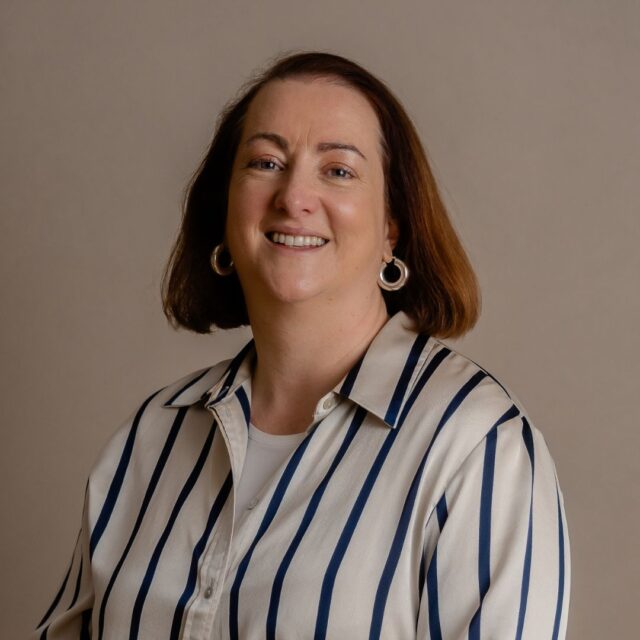206: Christmas in July: How to Find Your Perfect Christmas Inventory
Catherine Erdly: What are your customers going to want to buy from you this Christmas? That’s the question we’re going to be delving into today.
Hi everyone, I’m Catherine. I am the founder of the Resilient Retail Club. That is my membership group and mastermind for product businesses. You can find out more at resilientretailclub.com. And before we jump into today’s episode, I would love to invite you to rate and review the podcast. You can rate and review it in Apple Podcasts and you can rate it inside the app in Spotify, it makes a huge, huge difference to getting the podcast out there in front of more people. And of course, if you subscribe as well, subscribe, follow, whatever it’s called on the platform that you’re on, then you’ll be the first to know about every episode.
And again, the number of subscribers and followers is really crucial when it comes to getting the podcast out there. So if you haven’t done so yet, I would love it if you take a second and go do that right now.
Overview of Christmas Product Strategy
Catherine Erdly: Today’s episode is all about your Christmas products. So we are onto episode number three in a series of six episodes that we are using to delve into getting ready for Christmas 2024.
We started off in episode 204, looking at your overall Christmas strategy, what your intentions are for this time period. Last week, we spoke to Mike Cole. A coach and business strategist all about how to approach a busy time with fresh perspective. And today we are going to be talking all about your products.
So you’ve got your overall goal for the season. You know what your intention is, you know what you want to sell. Now we’re going to talk about how you break it down and actually look at the products that you want to be selling during this time period.
And this is really critical because again, we’re still in the summer months. So there are some tweaks that you might be able to make and it’s really worth thinking this stuff through so that you’re not feeling overwhelmed and out of your depth when you get into the peak season.
Welcome to the Resilient Retail Game Plan, a podcast for anyone wanting to start, grow or scale a profitable creative product business with me, Catherine Erdly. The Resilient Retail Game Plan is a podcast dedicated to one thing, breaking down the concepts and tools that I’ve gathered from 20 years in the retail industry and showing you how you can use them in your business.
This is the real nuts and bolts of running a successful product business, broken down in an easy, accessible way. This is not a podcast about learning how to make your business look good. It’s the tools and techniques that will make you and your business feel good. Confidently plan, launch and manage your products and feel in control of your sales numbers and cashflow to help you build a resilient retail business.
Analyzing Past Performance
Catherine Erdly: So just like the overall season, when it comes to your products, what you want to do is you want to start with the history.
You want to have a look at what the data is telling you in terms of the products, what worked last year, And what you want to use as your starting point for your range this year. There’s a couple of things that you’re looking for when it comes to last year’s products. You want to see what your bestsellers were.
You want to see how many you sold of those. But you also want to think back to, were there any products that, maybe they don’t make it onto the final bestseller list for the whole season, but that’s because they sold out really early. Were there any areas where you felt like you really left money on the table because there were products coming in and you just sold out of them so quickly, you know, you could have sold them twice over.
And likewise, were there any products that you were really keen on, you thought were going to be a crucial part of your Christmas strategy? Maybe it was a previous bestseller from another year and you feel like it started to decline. So taking that time and looking at your products will give you lots of ideas of where to start.
You want to basically be looking at how you can build on last year’s bestsellers. Doesn’t mean necessarily repeating them exactly, but being really clear that Last year what sold and what could you do better this year or what could you bring back that was just fabulous last year.
Identifying Hero Products
Catherine Erdly: Again if this is your first Christmas this is going to be a little bit trickier so you’re not going to have that data but regardless of whether you’ve got the data or not what you want to end up with and again this if it’s your first Christmas this may just have to be something that you are estimating or you’re taking educated get on but you want to understand what your hero products are going to be for the season.
So your hero products are your products that you effectively are betting on being the things that your customer will most want to buy from you at christmas And they typically will be in the gifting range, which sounds obvious, but really most of people’s hero products are ones that are really perfect for gifts.
Now, if you are clothing or accessories or home, it could still be all about gifting. But equally you may have some hero products that are about the perfect Christmas party dress or the perfect Christmas party earrings, for example. But otherwise for most people it’s going to be all about what makes the perfect gift.
Your hero products do not have to be, and probably in the most part, won’t be Christmas themed. So probably aren’t going to be a snowman mug, for example, but is it going to be a beautiful ceramic mug that has been your bestseller throughout the year and you really feel like you can get behind as the perfect Christmas present, then that’s going to be your hero product.
So have a think about your hero product. You may have more than one. You may have them in the different categories of price points. So for example, at Christmas, we’re looking at products that might be the sort of five to 10 pounds for stocking stuffers, the 10 to 20 for the secret Santa. The 20 to 30 is sort of the sweet spot for gifting.
That will cover most gifts that people might give to friends or relatives, not their most, their closest relatives, but relatives in general. And then you have the higher price points as well. Which you may or may not have items in, but that sort of 50 to a hundred, even over a hundred that might be a price point, for a special friend or a special family member.
So think about what your key hero products are going to be. And the reason that this is important is that this is effectively what you’re going to be building your marketing strategy around. We’ll come on to talk about marketing in a couple of episodes, but for right now, we’re starting with a product.
If you were a betting person and you were going to bet on what was going to sell the most at Christmas, those effectively are your hero products. They’re going to be featured on your homepage, they’re going to be featured on your social media, you’re going to be absolutely certain that if you have a photographer come on board to do some Christmas shots for you that they’re going to be focusing on lots of great shots of this, maybe the ones that you pitch for inclusion in gift guides if you’re doing PR, all of those sorts of things, that is what you’re looking for, for your hero products.
So the keys are then start with your history, identify your hero products.
Planning Your Product Range with a Focus on Gift Giving
Catherine Erdly: You may also want to have a think about the rest of your range. Now the focus is very much going to be on those heroes, but have a think about, do you have everything for the different price points.
Do you have a range of items that cover off that stocking stuffer, that secret Santa, that 20 to 30 pound? Or is that just simply not right for you? If you’re fine jewelry brands and clearly you’re not going to be having those price points. But if you are somebody for example who has an independent retailer then absolutely thinking about what you’ve got in all of these different price points will be really useful and beneficial That doesn’t have to be super extensive, but just have that thought process go through the process of thinking about your products, thinking about what you’re going to offer and thinking, is this something else that you need to source quickly or bring in design?
If you’re making yourself like, what do you need to do in order to get your product range ready to go? So once you’ve had a look at your history, identified your hero products, had a look at the rest of the range, next thing to do is decide on your launch date.
Deciding on Holiday Launch Dates
Catherine Erdly: There’s lots of different schools of thoughts about this and I’m not really sure that there’s a right answer or wrong answer.
Some people will have a little bit of Christmas going out in July for example. Some people for the super earlies or for the press products. Some people will start to eke them onto their website quietly in September or October as almost like a soft launch so the products are out there for the people who are looking early.
And some people will do the full Shebang where, you know, we get through Halloween, we get through bonfire night and then boom, we’re into Christmas and it’s like a full Christmas launch.
It’s, it’s interesting every year we have this whole debate about are people shopping earlier, they’re shopping later. I do think we have seen in the last couple of years that there are customers out there who want to spread their purchasing for Christmas over a longer period of time.
So sometimes having that product out there in the autumn is a good thing to start getting feelers out, start getting an understanding or having the product there for the customer that does want to purchase something and put it in their gift box for later. But equally, so if you really feel like I don’t really get much interest in this stuff until November and actually I want to keep it fresh and have a big shebang in November, then that’s fine too.
It’s up to you, but just be really clear as to what you’re going to doing be doing when, when you want to launch it.
That will also help you plan out things like when do your emails need to be done and written? When do you need to get imagery? If you’re having Christmas photo shoots, for example, all of those things will be really beneficial for you to be thinking about. And all of that starts with working backwards from the dates that you’ve got.
The next thing that you need to do, so you’ve got, so there’s the plans, as you can see, they’re starting to take shape. You’ve got an idea of what you want to sell. You’ve got an idea of when you want to, to bring it in. Next thing that you want to do is for, especially for your hero items.
If you don’t do it for anything else, then that’s fine. But if you have got hero items, you need to have a thing about how many you are going to sell. So you need to do some sales projections. If you have had these products previously, that is going to be somewhat easier. If you sold a hundred last year and your business generally is 20 percent up on last year, then you could reasonably expect to sell 120.
And actually, if you sold those hundred last year, but you sold out in three days, then, well, maybe you could sell 200 or 250. If you don’t have any data, if this is your very first Christmas, then you just have to take an estimate, but it’s really useful to go through the process. So for example, you’ve decided that your ceramic candle is going to be your hero product because it’s something that’s really popular for most of the year.
Now, maybe under normal circumstances you sell 20 a week of these. But at Christmas time, you’re thinking, all right, well, let’s assume for the last six weeks in the run up to Christmas, I’m going to sell twice as many as normal. Now, again, if this is your first Christmas, you’re going to have to estimate this.
If it’s not your first Christmas, you can have a look at your overall general patterns. If you look at a typical week during the year versus your weeks in the run up to Christmas, how do they compare? Are they double a normal week? Are they triple a normal week?
Like, what is the relationship? And you can use that to start trying to estimate how many you think you’re going to sell of your Hero products. So once you have got those quantities, the other thing that you should ask yourself to help you land on that final number that you want to make sure that you have Is you want to ask yourself a very important question, and it’s one that I’m always asking my clients and the people inside my mastermind and also the people inside my membership group.
Deciding which is worse, to have too much of this item or not enough?
Catherine Erdly: And that is, which is worse, to have too much of this item or not enough?
So let’s look at a couple of different scenarios and what that might mean. So scenario number one, you have an item that is a beautiful winter themed candle. So it is maybe pine scented and the candle holder is also Christmas themed, has a Christmas tree on it, for example. Now this is what we call a brown banana.
So a brown banana is something that once you get to Christmas, it is not going to sell. So, if you want to sell it after the 25th of December, you’re going to have to discount it heavily. And most things that are very Christmas themed, so they either have snowmen, or Father Christmas, reindeers, all of those sorts of things, if they say Merry Christmas, all of those are pretty much fit in that category.
So if you have an item like this, the answer to the question, is it worse to have too much or not enough? Is it’s really probably worse in the long run to have too many of these because once you get past the 25th of December, your choices are going to be hit it really hard or alternatively, it’s going to have to be something that you sit on all year round until the next year comes along.
And if you want to do that, then that’s fine. If you’ve got space, if you don’t mind your money being tied up like that, then that’s fine. If, however, you would rather run your stock a little bit leaner, Then you want to make sure that you’re sold out of that. So when you come to do your forecast you then want to pull that back and make sure that you’ve probably slightly underestimated What you think you’re going to sell?
So that you’re probably going to sell out or at least be left with just a few Now, let’s look on the other side. You’ve decided that your hero product is your key best selling candle. It is It’s floral scented, it sells all year round, it’s your best seller all year round. This is going to be your hero product for Christmas.
You are going to shout about it as something that will be the perfect Christmas gift. Now if that is the case, the answer to the question, which is worse for me to sell out or for me to have too much? The answer to that is probably it’s worse if you don’t have enough. Because if you don’t have enough and you can’t get more at Christmas time and the lead time is maybe a little bit long and you know that once you place that Christmas order, that’s going to be it till January. Then, I would go ahead and place the amount you think you’re going to sell. Maybe even add a tiny little buffer on top, because if you’re left over with extra in January, you’ll just sell through them. You just won’t have to play such a big top up order in January.
So the risk to you and your business is very different from when we talk about this very Christmas specific item.
So when you’re going through your Christmas products, that’s what I want you to be asking yourself for every single one, do your forecast, work out how many you think you’re going to sell, ask yourself, is it worse if I have too much or not enough and then adjust your forecast accordingly so that you’re placing stock in such a way that you don’t feel nervous about having too much left versus running out and you know for a fact that you’ve Basically gone for the best case For whatever scenario whatever type of product that we’re talking about.
Final Preparations and Conclusion
Catherine Erdly: So The final piece then so we’ve looked at our history. We’ve identified our hero products We’ve looked at our range and talked about filling in gaps. We’ve decided on a launch date. We’ve made our forecasts We’ve asked ourselves whether it’s better to have too much or not enough And then the final piece then for the puzzle is to run through these products And look at your timeline Make sure if you’ve placed orders, maybe you placed them back in January, make sure that you are checking that you’re still happy with that quantity.
Have a think about what you need to make if you’re somebody who makes things to order. Can you prep elements of it? For example, could you cut out certain pieces so that if it’s a best selling item that you’re ready during the busy time, you don’t have quite as much to do, even if you don’t make the full thing.
Do you need to order in more? Do you need to just double check the orders that you’ve got and make sure they match your forecast? What do you need to do basically to secure that stock? It is going to be a juggle. Every single retailer has this juggle of working out when they can bring the stock in.
Everyone has a pinch point in September and October. So you’ve got to work out when you can bring this stock in and when you’re going to buy this stock and compared to when your sales are going to start to come in. There will be a pinch point. Everybody has it doesn’t mean you failed. It just means that Christmas and peak planning can be a bit tricky.
So you kind of have to work your way through that.
But once you’ve run through those steps, you’ll be in a really solid position. Now, if you’re wondering, well, that sounds great, but I don’t know what I am going to be selling or how do I come up with a perfect product? Don’t worry, I’ve got you covered. I will be back next week with Joanne Griffin, who is going to talk us through the process of creating products that your customer will love.
Until next week. See you then. Bye.







